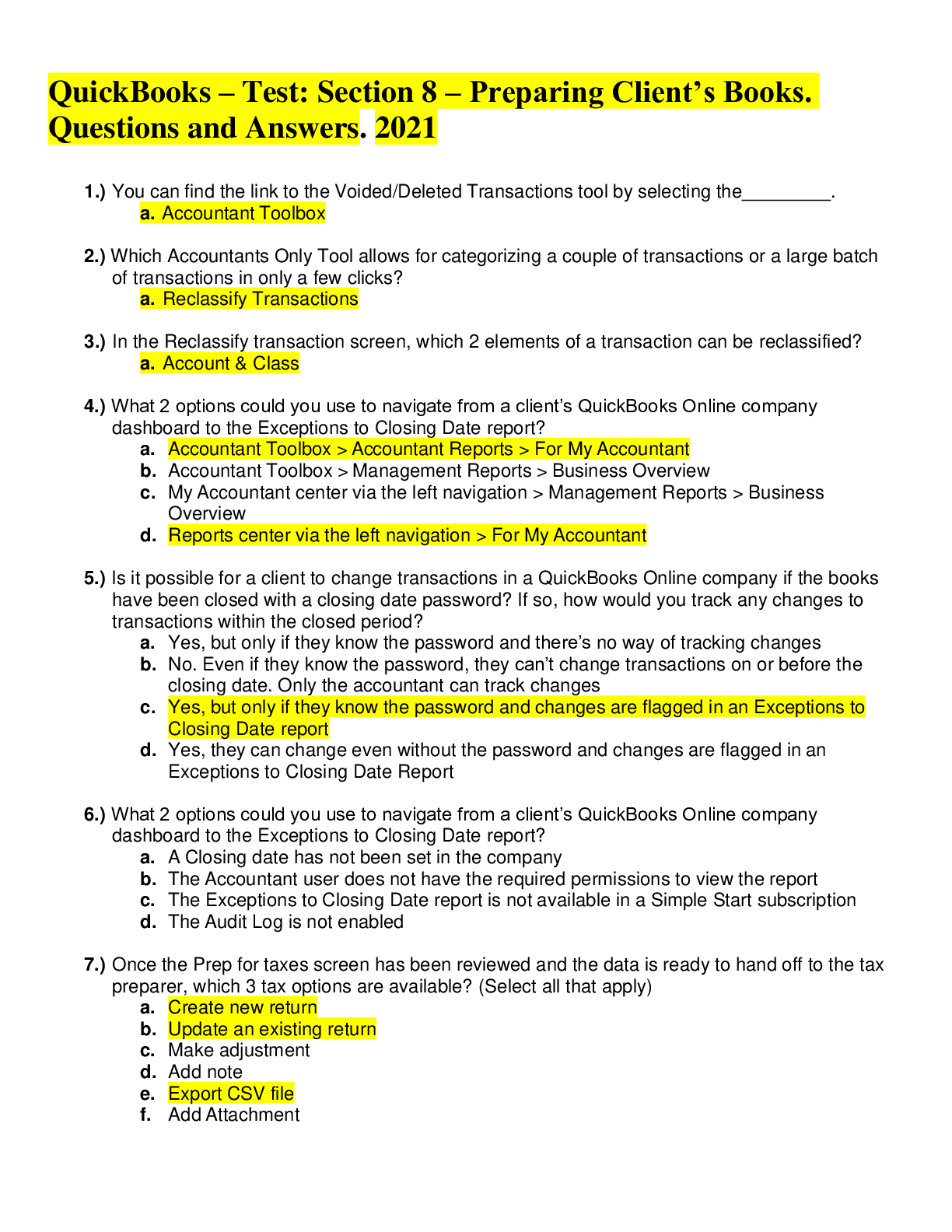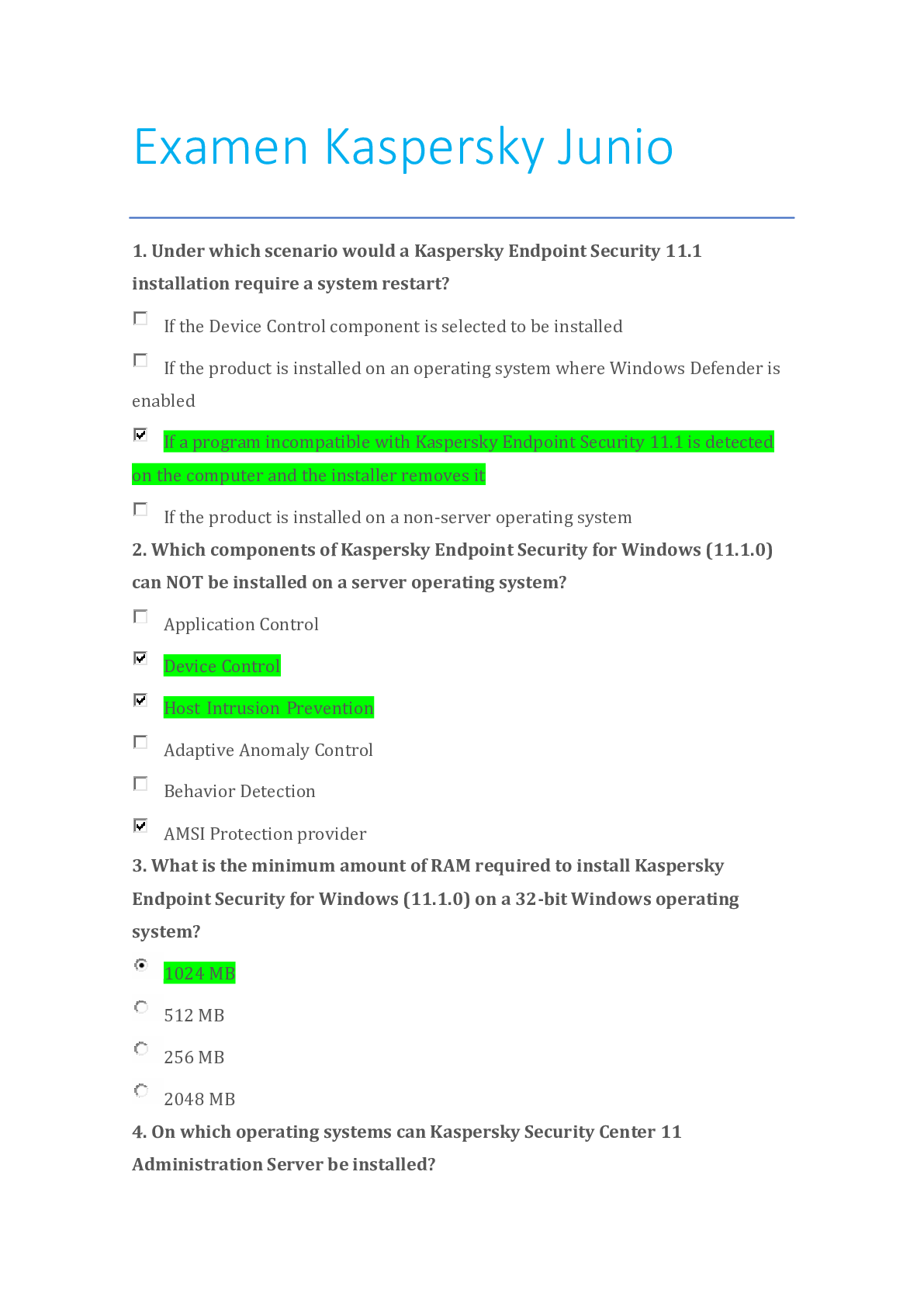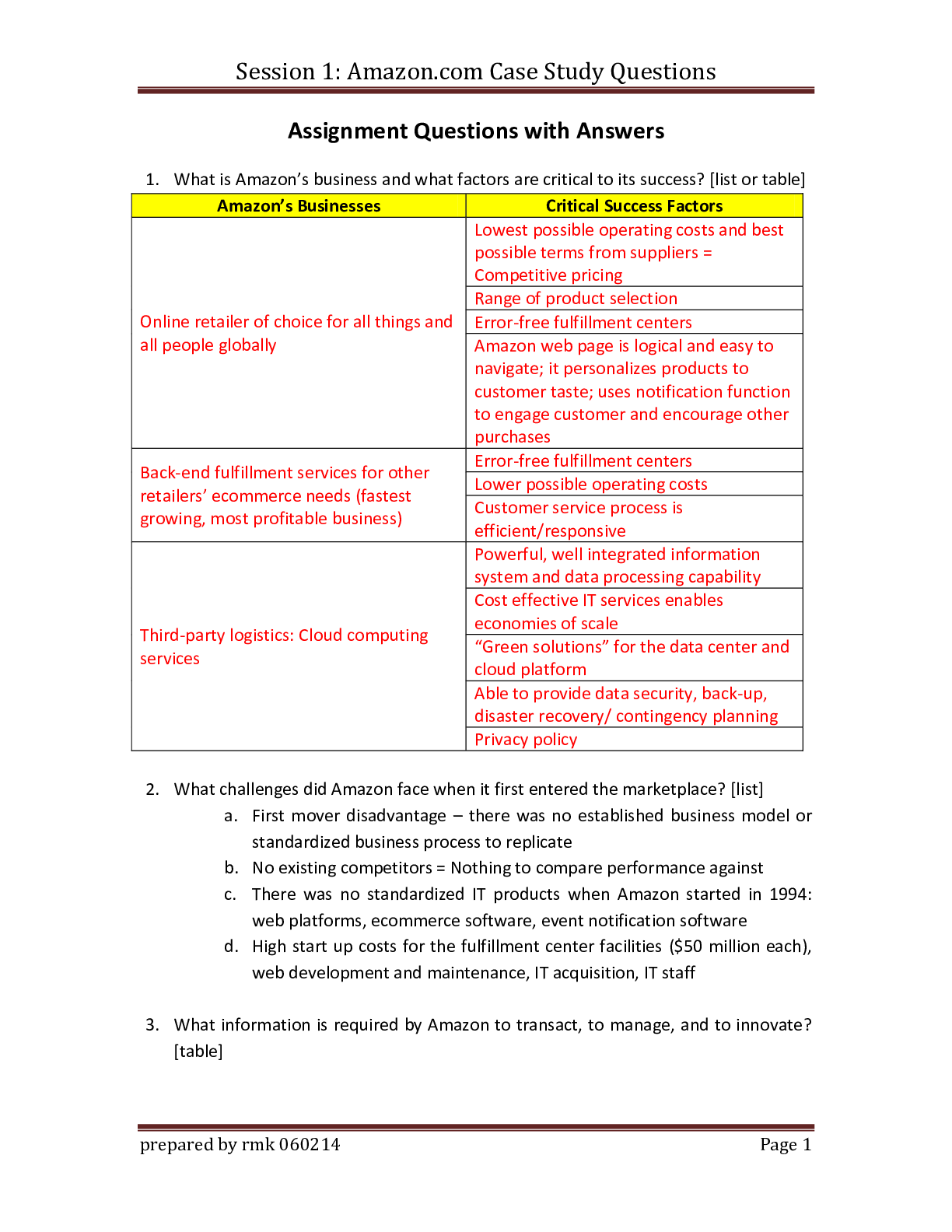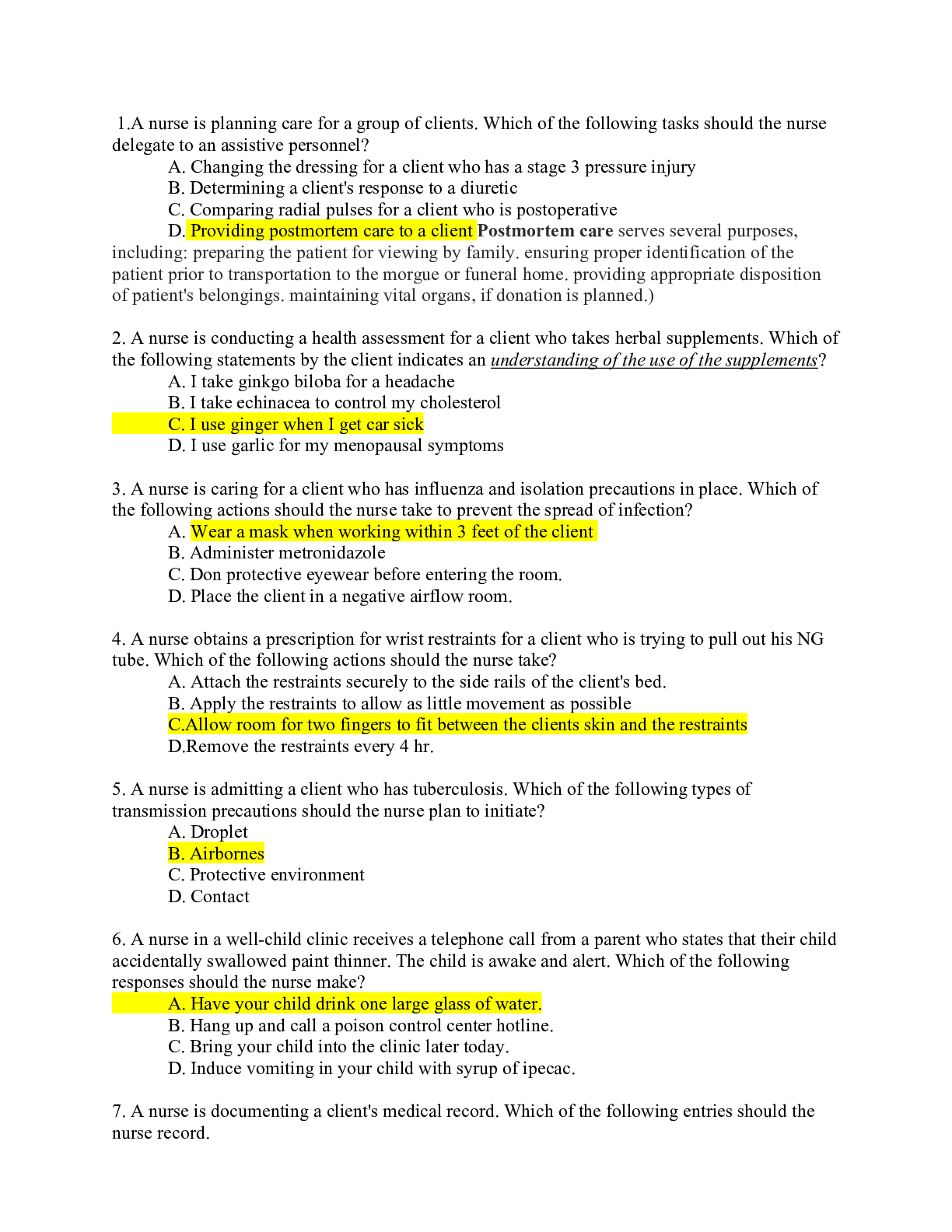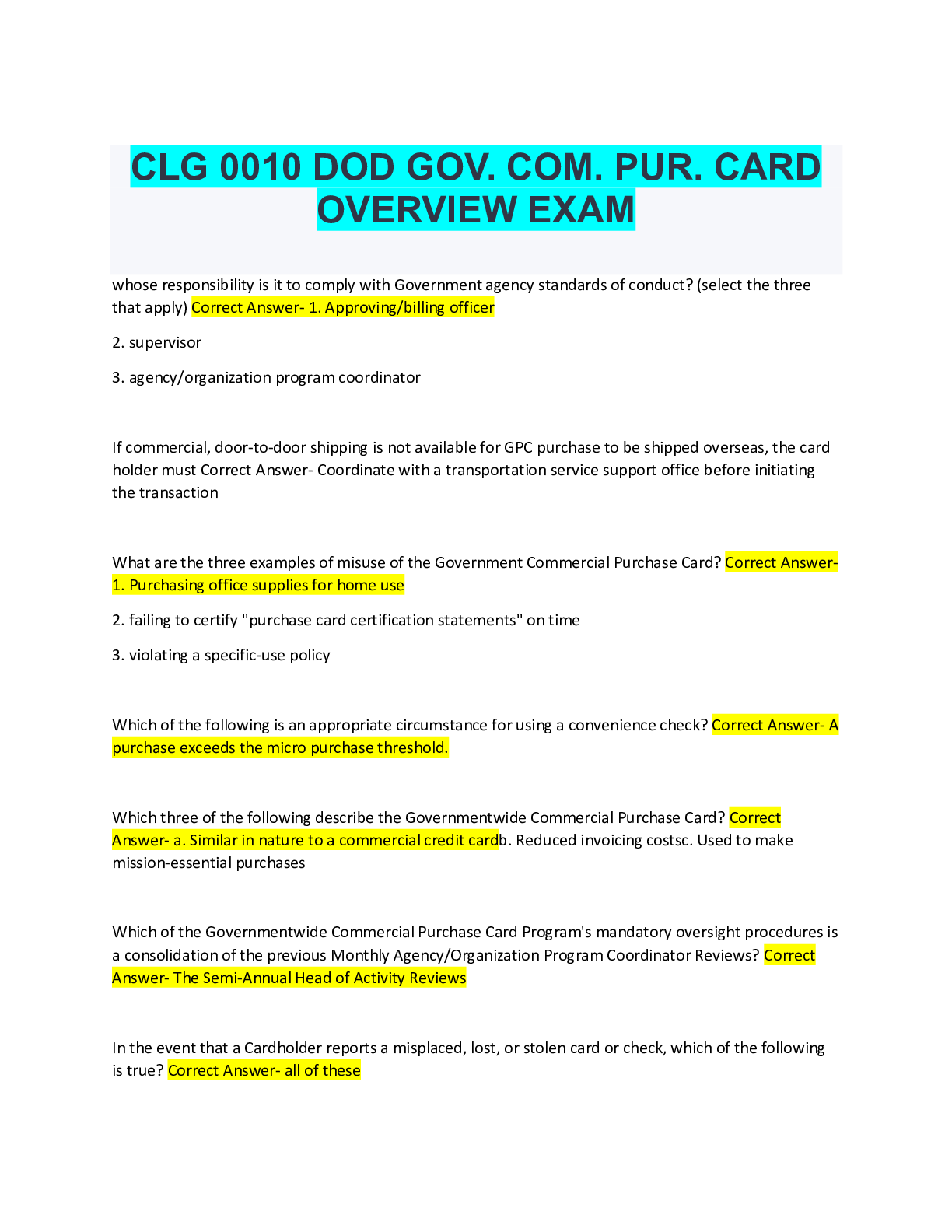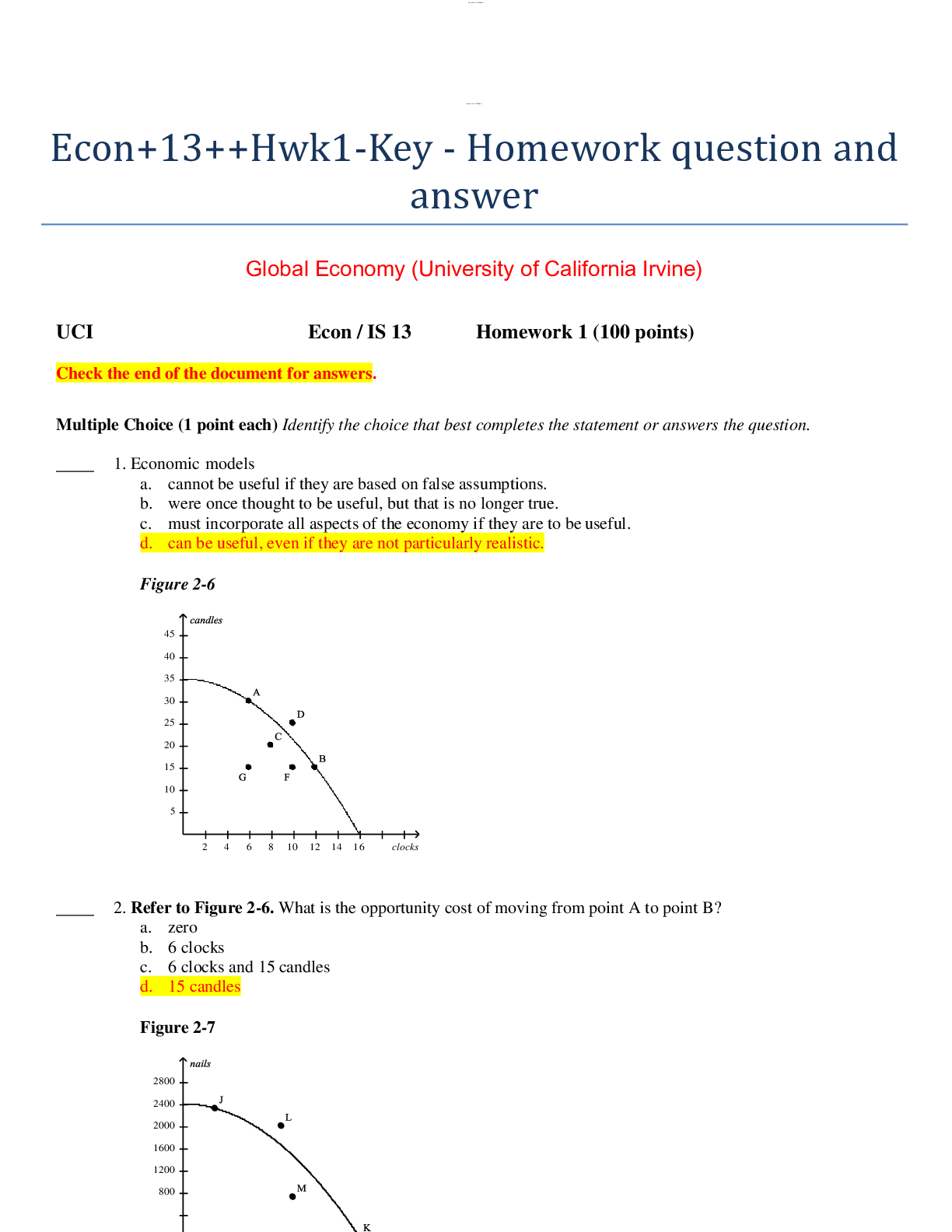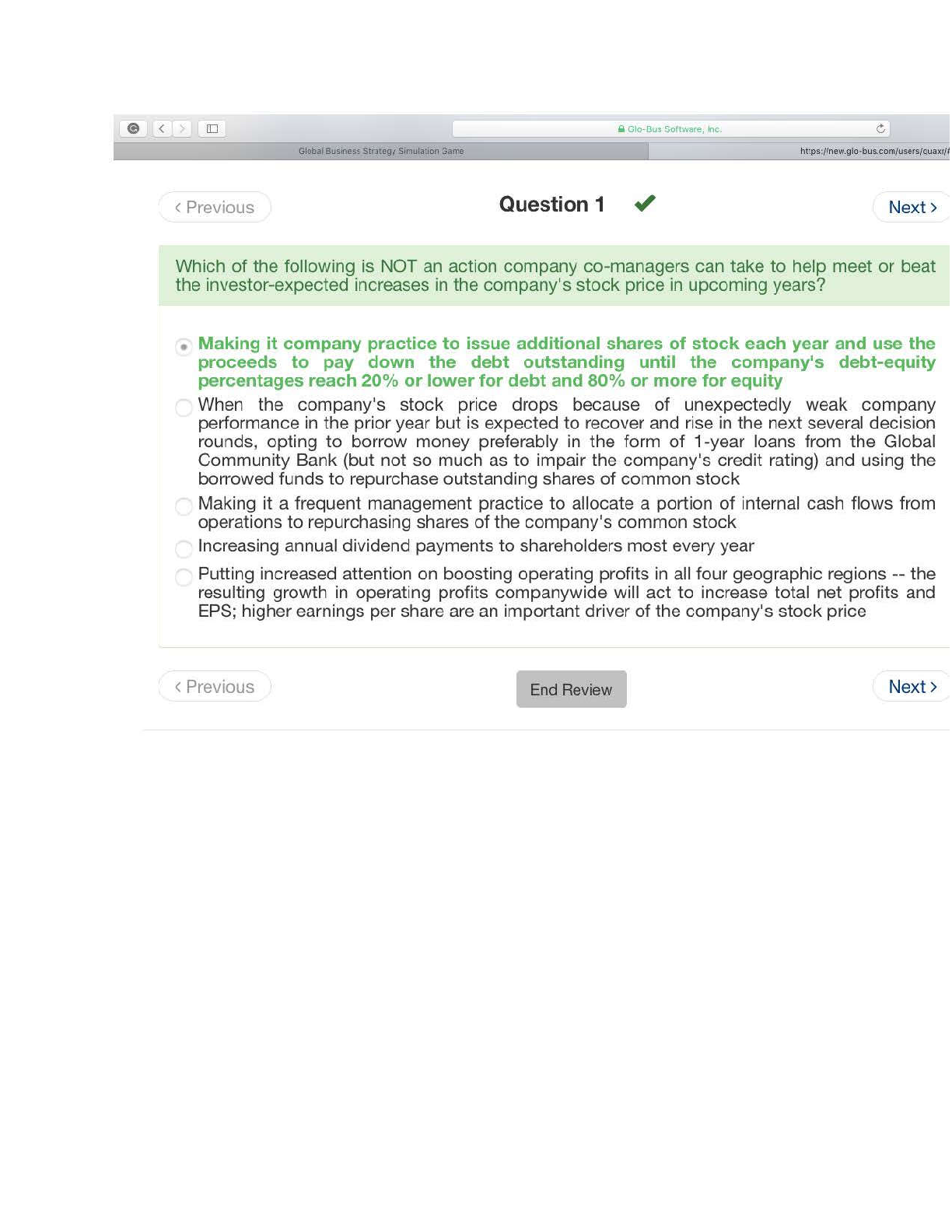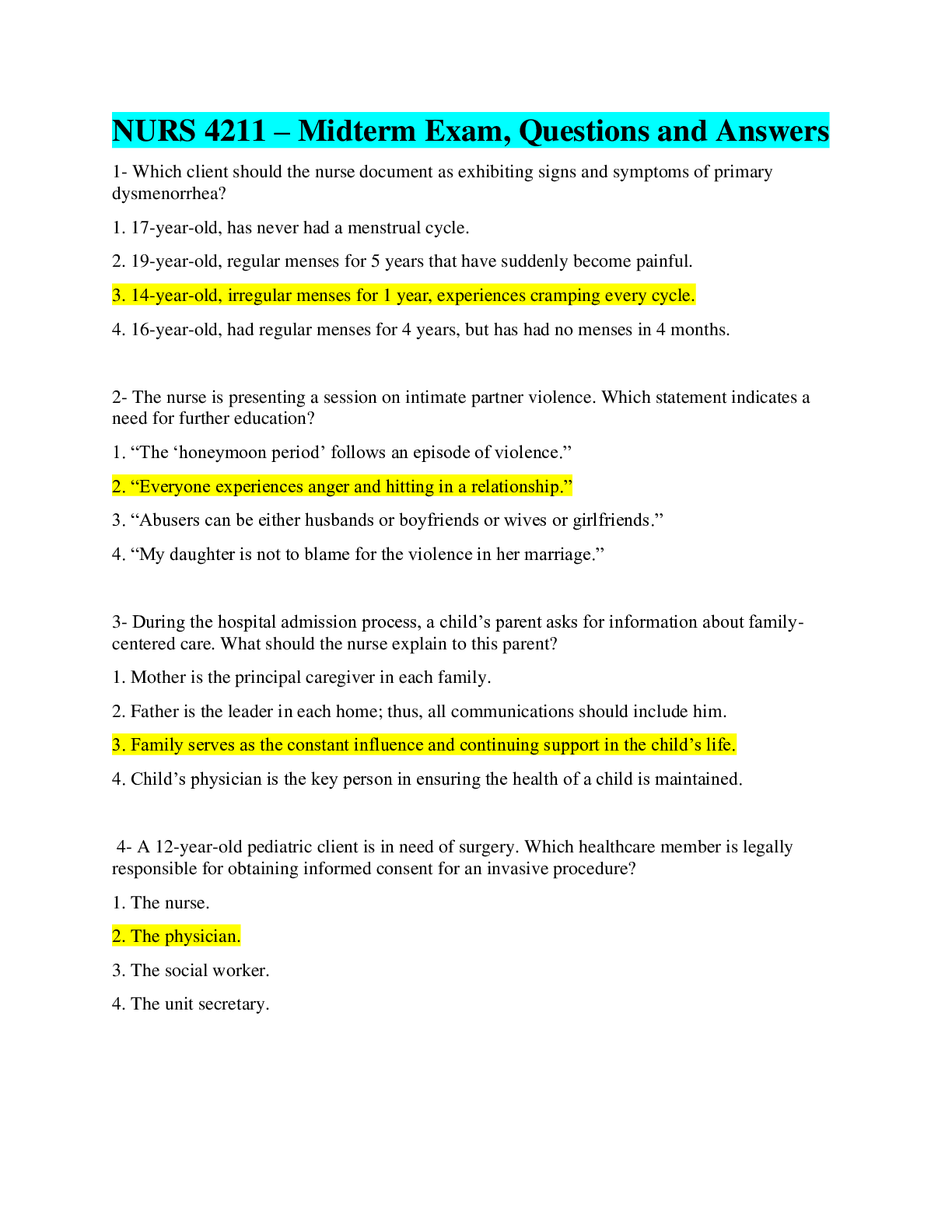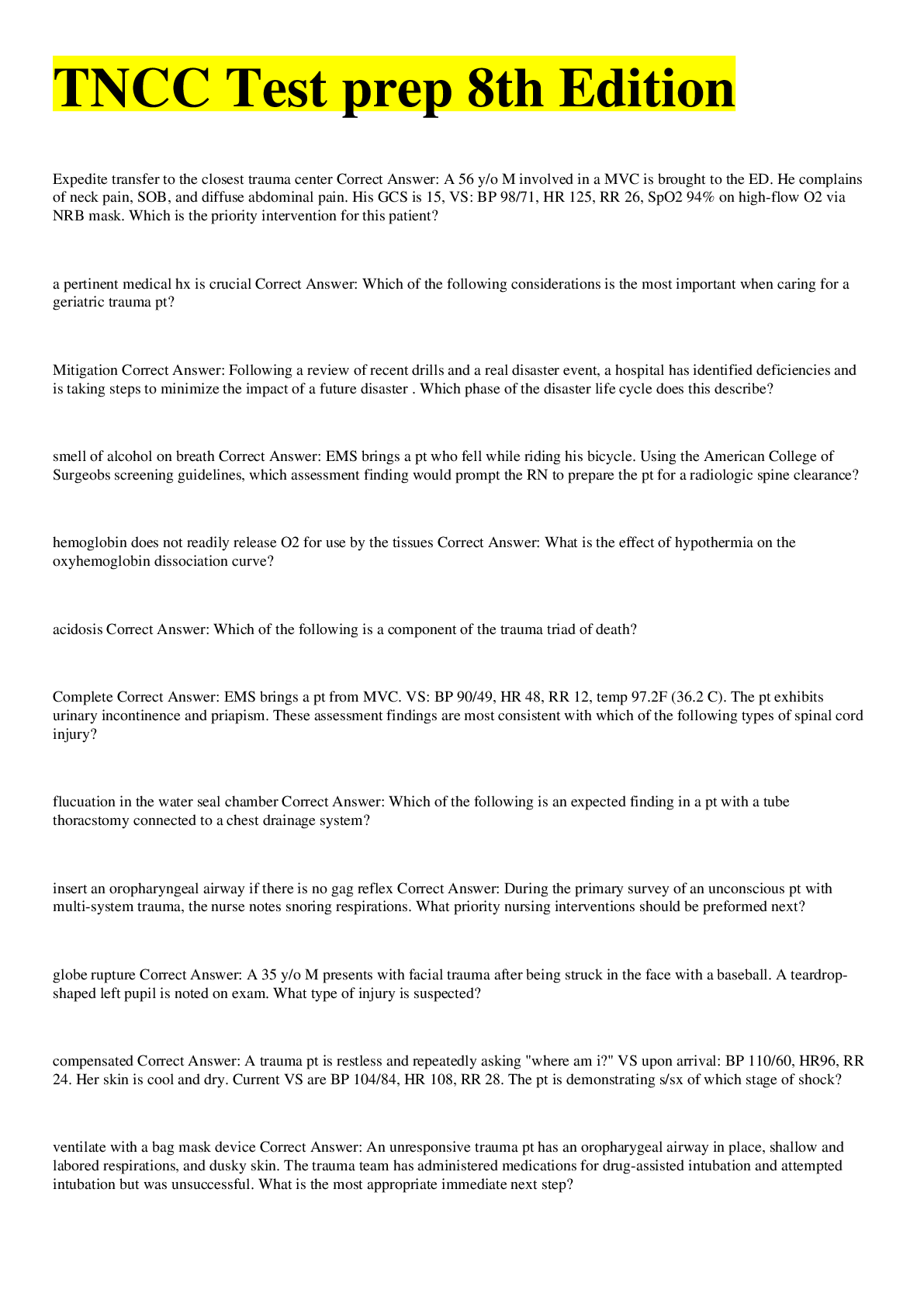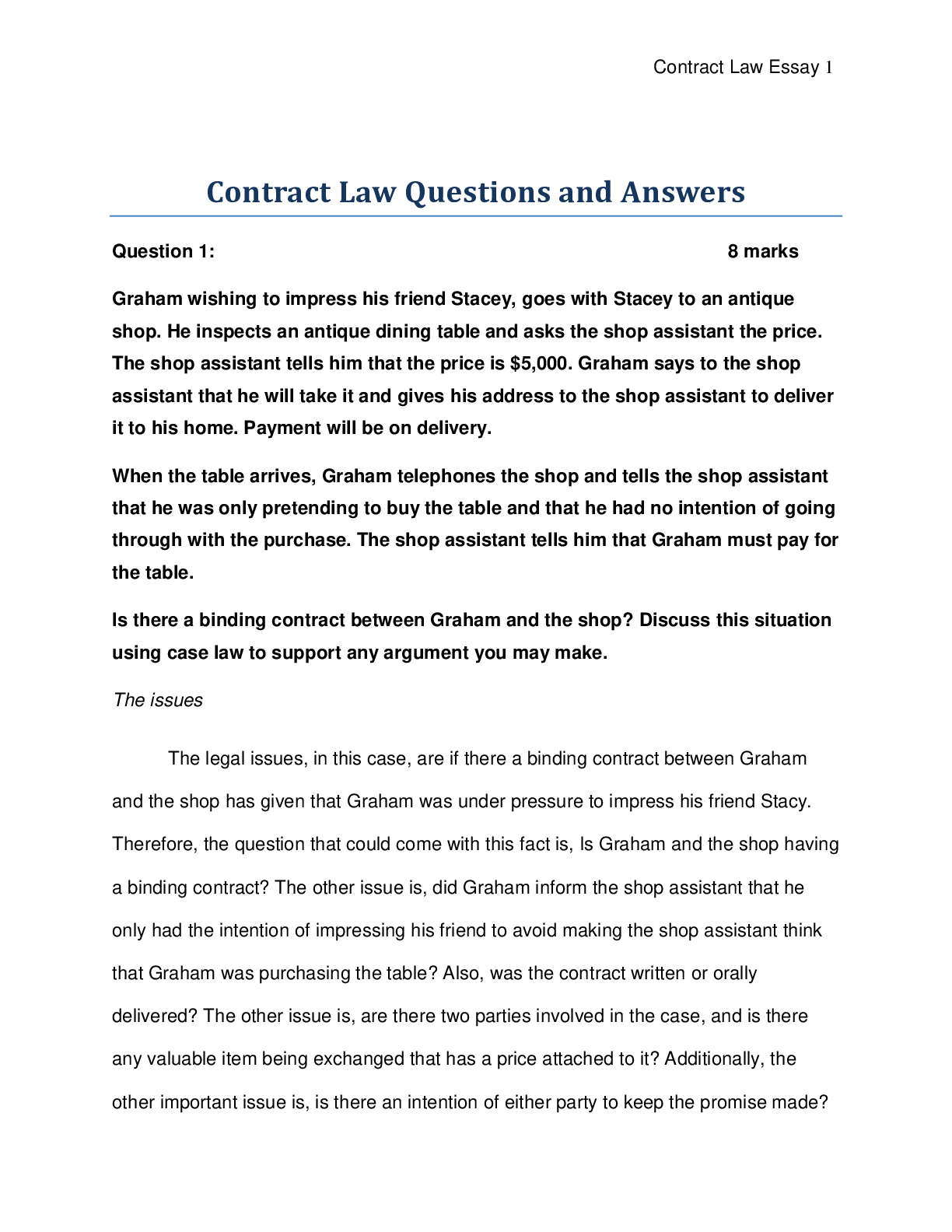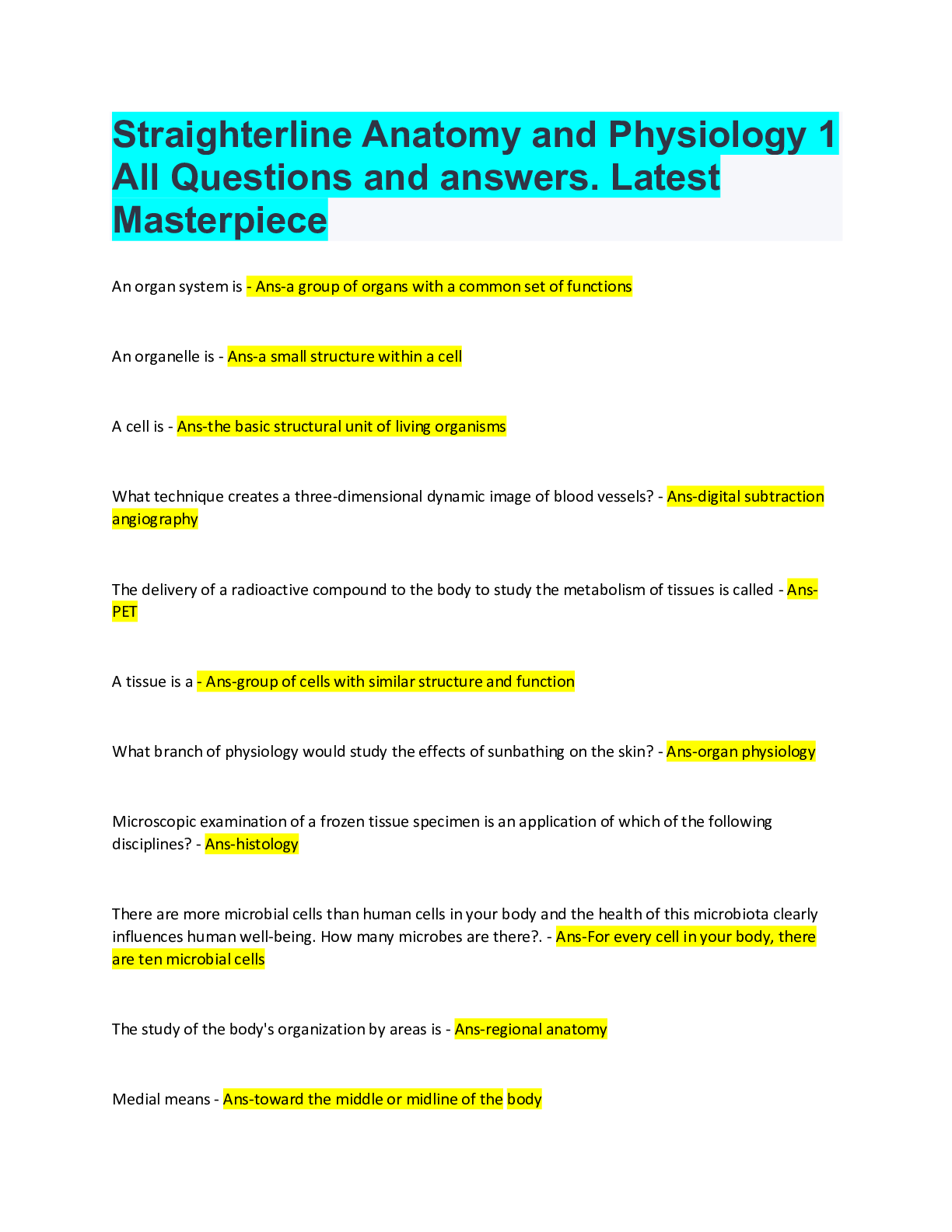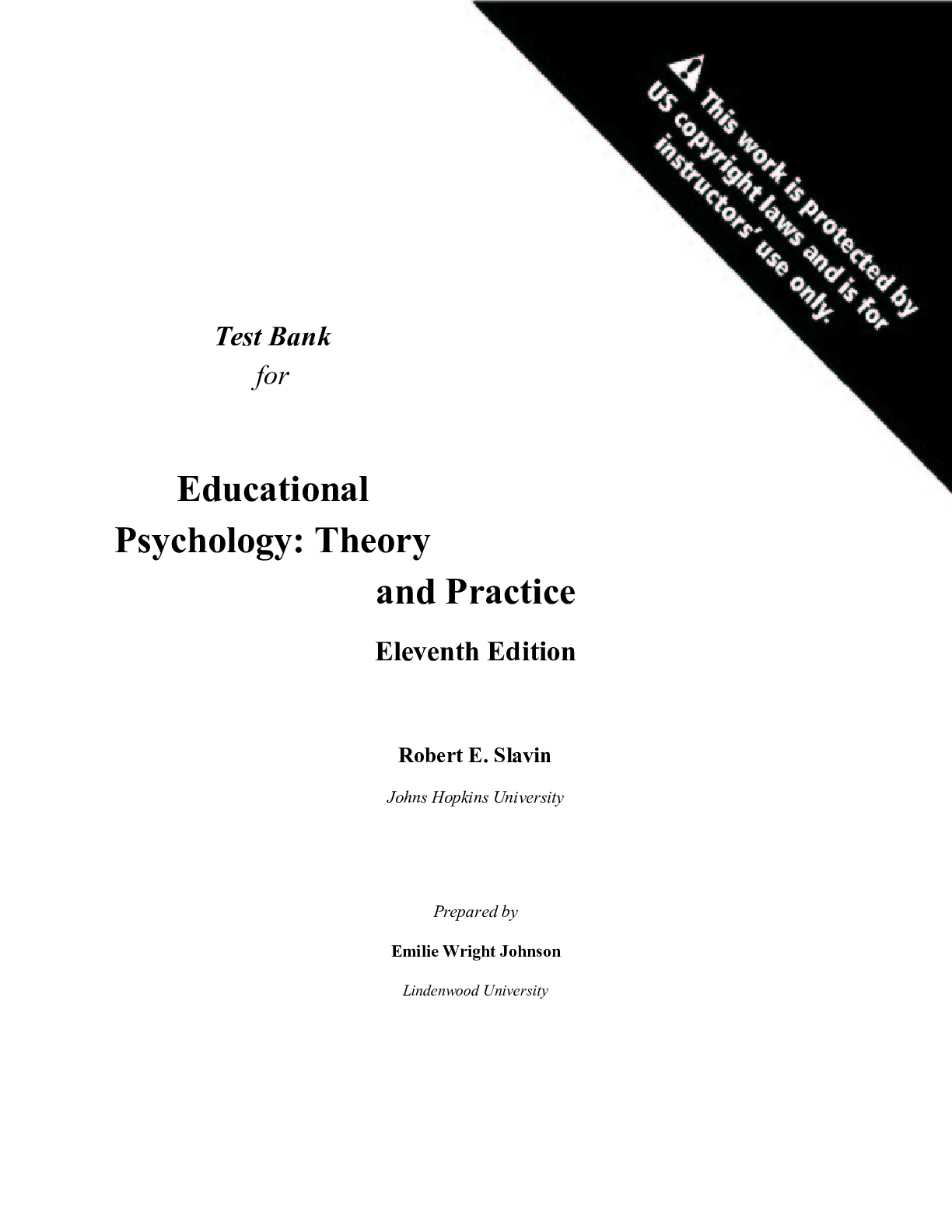*NURSING > QUESTIONS & ANSWERS > Final Study Guide. Nursing Guide Questions and answers. LATEST PREVIEW. Graded A+ (All)
Final Study Guide. Nursing Guide Questions and answers. LATEST PREVIEW. Graded A+
Document Content and Description Below
Final Study Guide. Nursing Guide Questions and answers.LATEST PREVIEW. Graded A+ For which of the following patients is foot care likely the highest priority? A - A patient who has experience post... operative pneumonia and has been placed on a ventilator B - A patient who has been diagnosed with Alzheimer disease and whose mobility is decreasing C - A patient who is obese and has a diagnosis of type 1 diabetes D - A patient who has chronic renal failure and requires hemodialysis three times weekly. - Ans-C - A patient who is obese and has a diagnosis of type 1 diabetes A nurse is caring for a client with a history of cardiac and vascular disease. Which of the following fats should the nurse allow in the client's diet for his condition? a) Unsaturated fats b) Saturated fats c) Hydrogenated fats d) Trans fats - Ans-A - Unsaturated Fats The nurse has observed that a patient's food intake has diminished in recent days. What intervention should the nurse perform in order to stimulate the patient's appetite? a) Offer nutritional supplements and explain the potential benefits of each. b) Reduce the frequency of meals in order to allow the patient to develop an appetite. c) Offer larger meals and encourage the patient to eat as much as he or she is comfortable with. d) Try to ensure that the patient's food is attractive and sufficiently warm. - Ans-D - Try to ensure that the patient's food is attractive and sufficiently warm.A client who has bleeding tendencies has a deficiency in which vitamin? a) Vitamin B b) Vitamin C c) Vitamin K d) Vitamin A - Ans-C - Vitamin K The nurse caring for a patient for several days has assessed that he has been eating poorly during his hospitalization. Which nursing measure should the nurse implement to assist the patient in improving his nutritional intake? a) Encourage his daughter to prepare food at home and bring it to the patient. b) Provide bland meals. c) Provide distractions while the patient is fed so that he will eat more. d) Serve large meals and encourage the patient to eat as much as possible. - Ans-A - encourage his daughter to prepare food at home and bring it to the patient. A nurse is caring for a client with a wound infection. The dietician has prescribed a diet rich in vitamin A. The client asks the nurse, "Why do I need Vitamin A?" The nurse integrates an understanding of which of the following as a major reason when responding to the client? a) It helps maintain healthy epithelium b) It maintains normal mineralization of cartilage c) It promotes renal reabsorption of calcium d) It mobilizes phosphorus from bone - Ans-A - It helps maintain healthy epithelium Which of the following is a fat-soluble vitamin? a) Vitamin B12 b) Vitamin B6c) Vitamin E d) Vitamin C - Ans-C - Vitamin E A nurse is preparing a teaching plan for a client who is obese and has diabetes mellitus. Which of the following would the nurse include when discussing the the effect of diabetes on nutrition? a) Cells cannot use glucose to produce energy. b) The digestion of fats and protein is altered. c) Intolerance to gluten occurs. d) Glucose levels of the blood are reduced - Ans-A - Cells cannot use glucose to produce energy. A 20-year-old woman has announced her intention to implement a zero-fat diet in order to lose weight and maximize her health. What is a potential consequence of completely eliminating fat sources from the woman's diet? a) Decreased production of antibodies b) Decreased water absorption in the colon c) Impaired vitamin absorption d) Impaired tissue growth and repair - Ans-C - Impaired vitamin absorption A nurse is caring for a pregnant client who is a strict vegetarian. What type of diet should the client follow? a) A diet rich in sodium b) A diet rich in protein c) A diet lower in calcium and iron d) A diet rich in fat - Ans-B - A diet rich in protein You are caring for a patient who has dysphagia and is unable to eat independently. You are preparing to assist the patient in eating a meal. Which of the following actions is appropriate?a) Create a positive social environment by asking the patient about childhood food memories. b) Arrange food items in a clock face pattern and inform the patient what time on a clock corresponds to each food item. c) Encourage the patient to eat using a consistent, efficient pace to prevent hot foods from becoming too cool and cool foods from becoming too warm. d) Speak to the patient but limit the need for the patient to respond verbally while chewing and swallowing. - Ans-D - Speak to the patient but limit the need for the patient to respond verbally while chewing and swallowing. [Show More]
Last updated: 1 year ago
Preview 1 out of 256 pages

Reviews( 0 )
Document information
Connected school, study & course
About the document
Uploaded On
Jun 27, 2022
Number of pages
256
Written in
Additional information
This document has been written for:
Uploaded
Jun 27, 2022
Downloads
0
Views
75


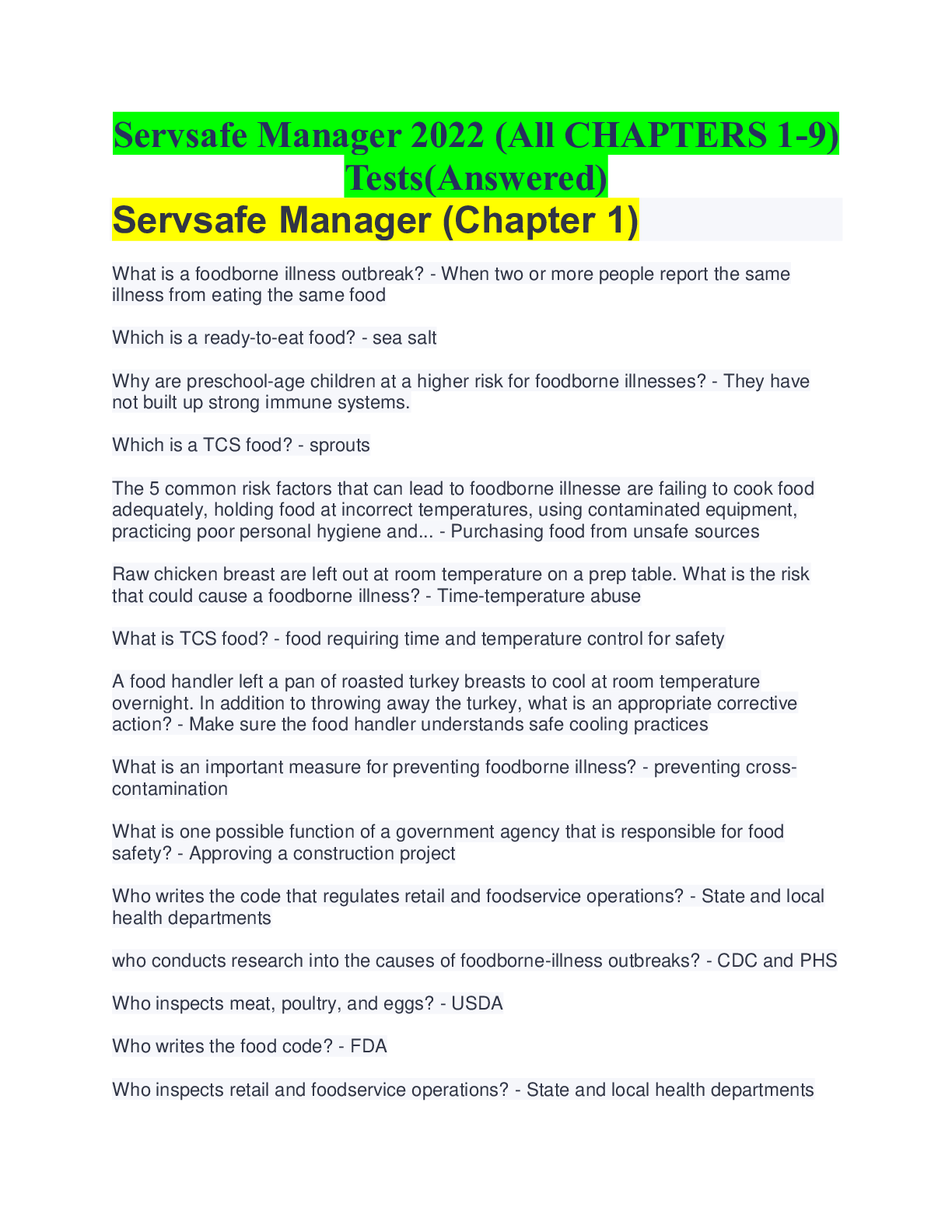
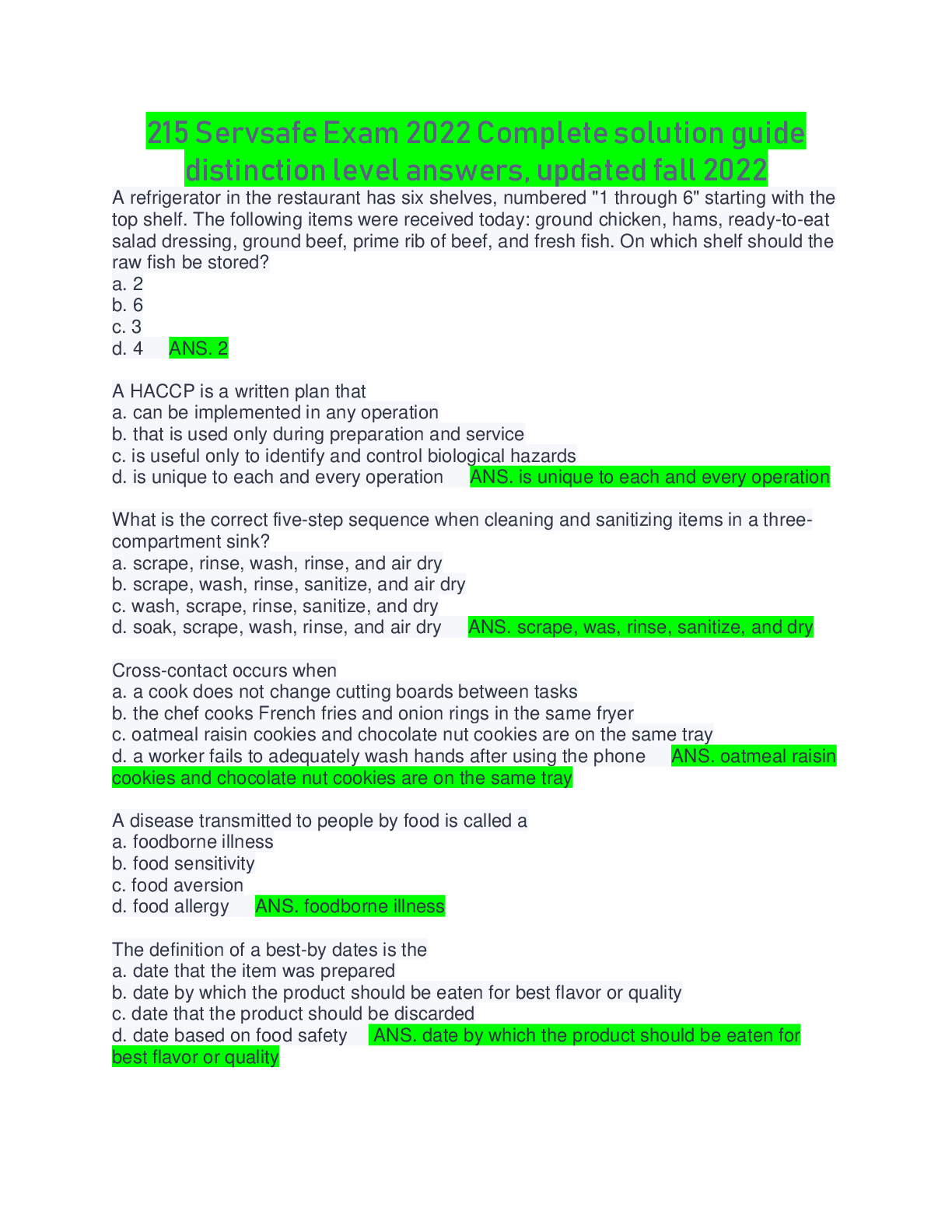
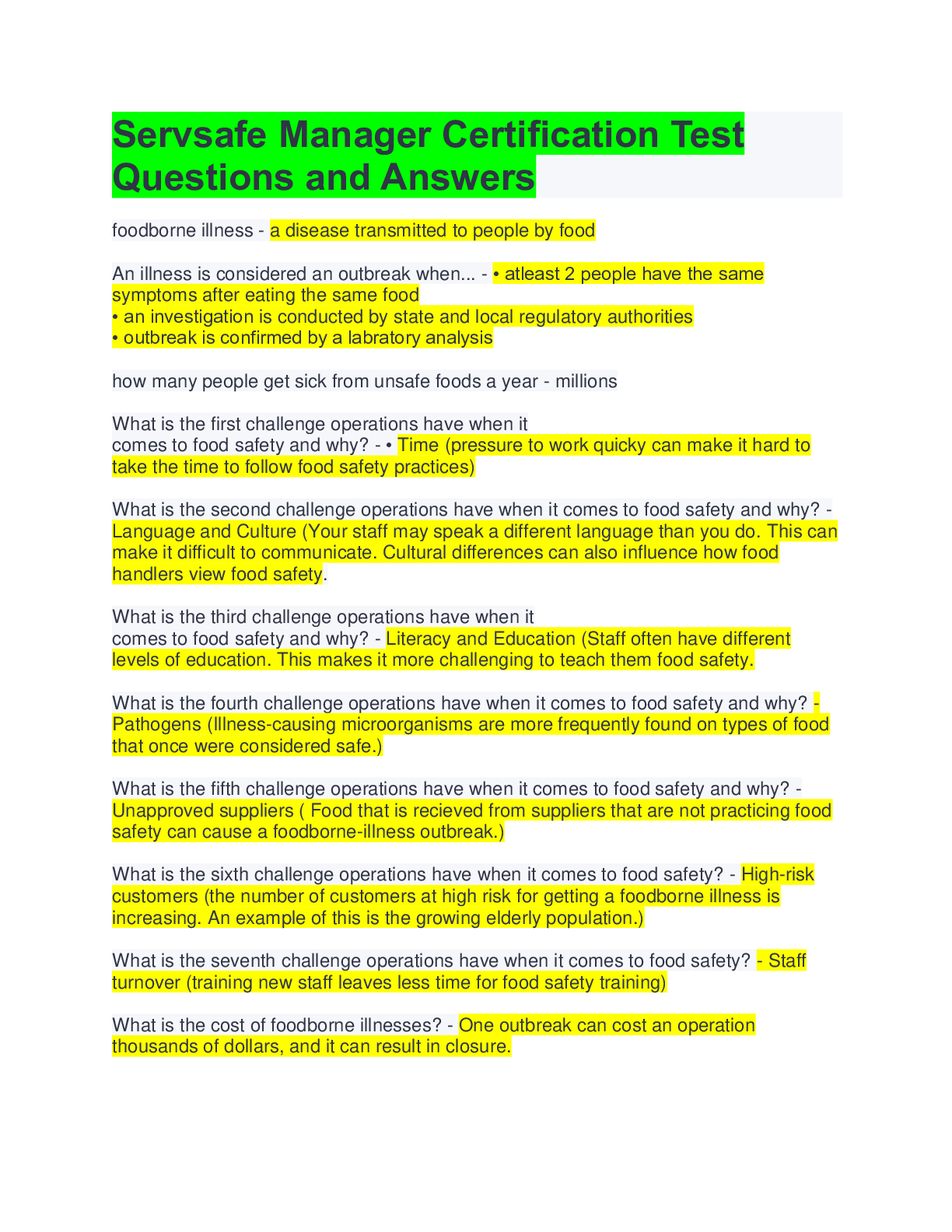
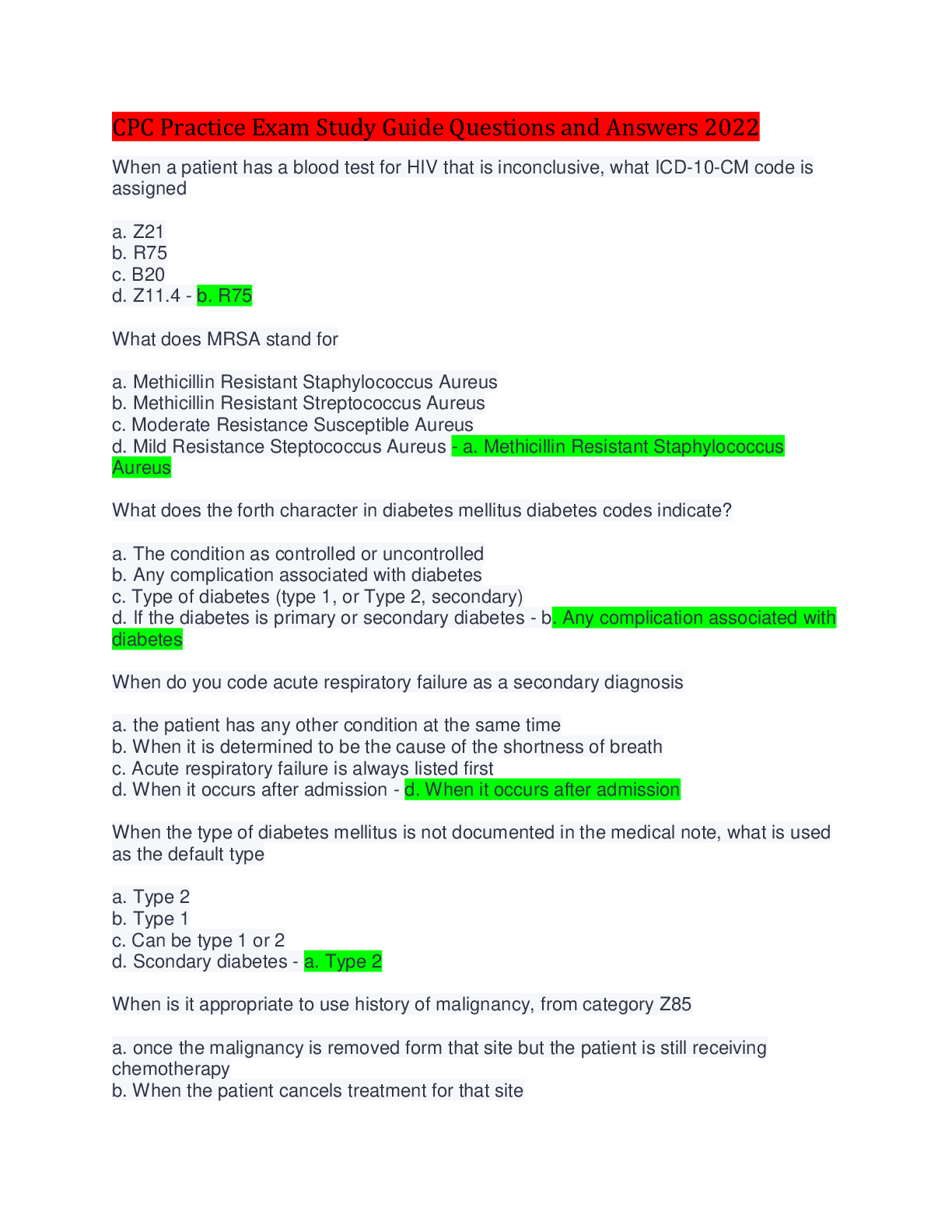
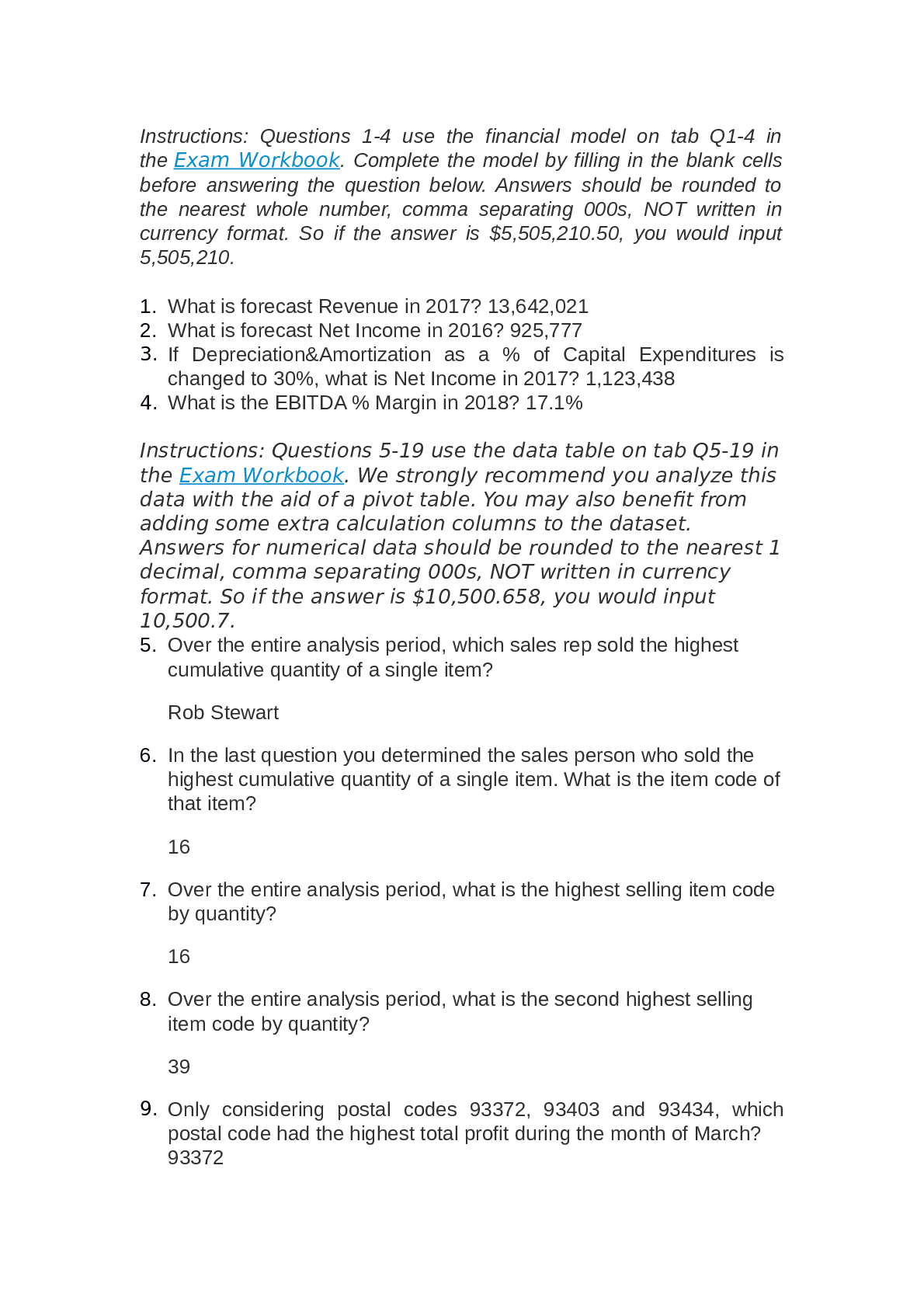
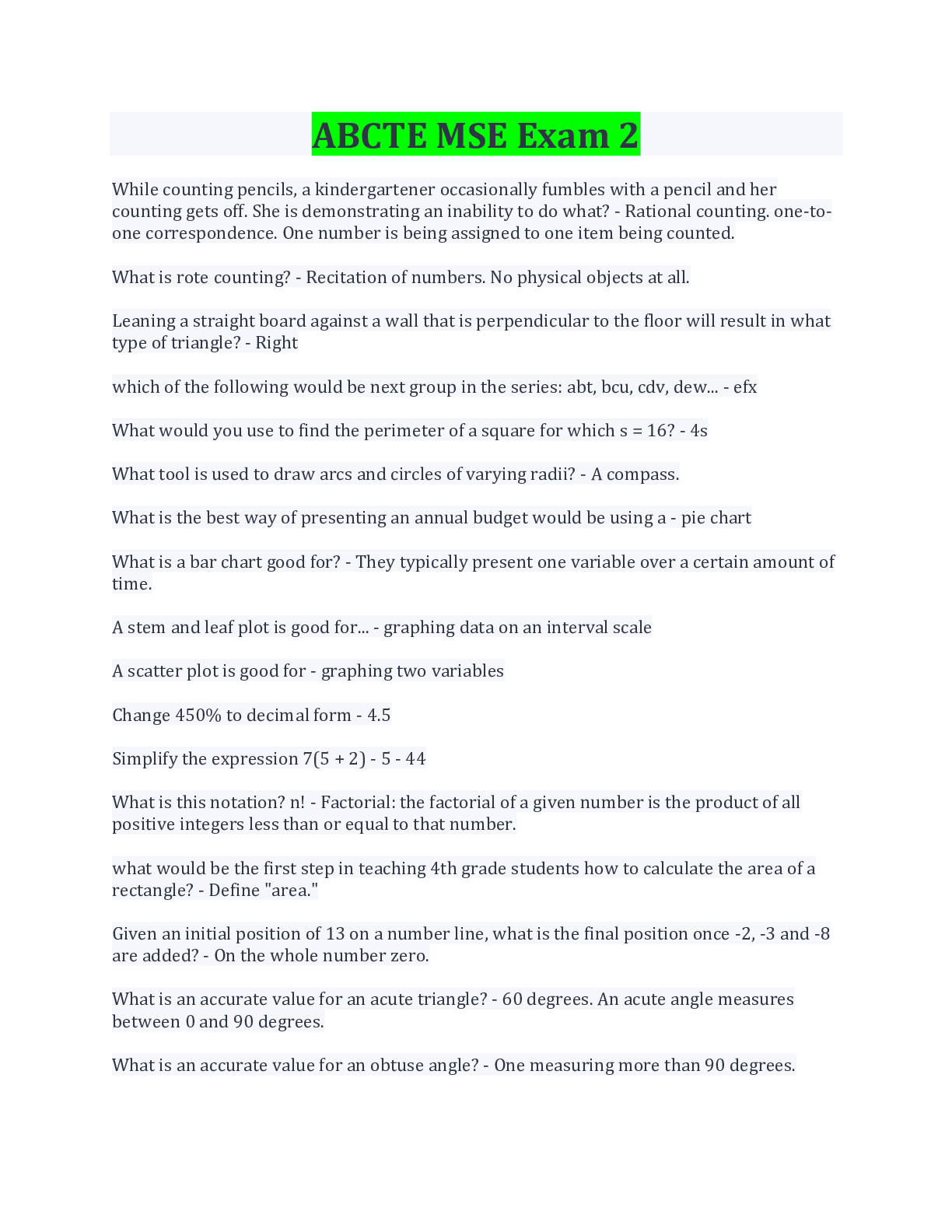
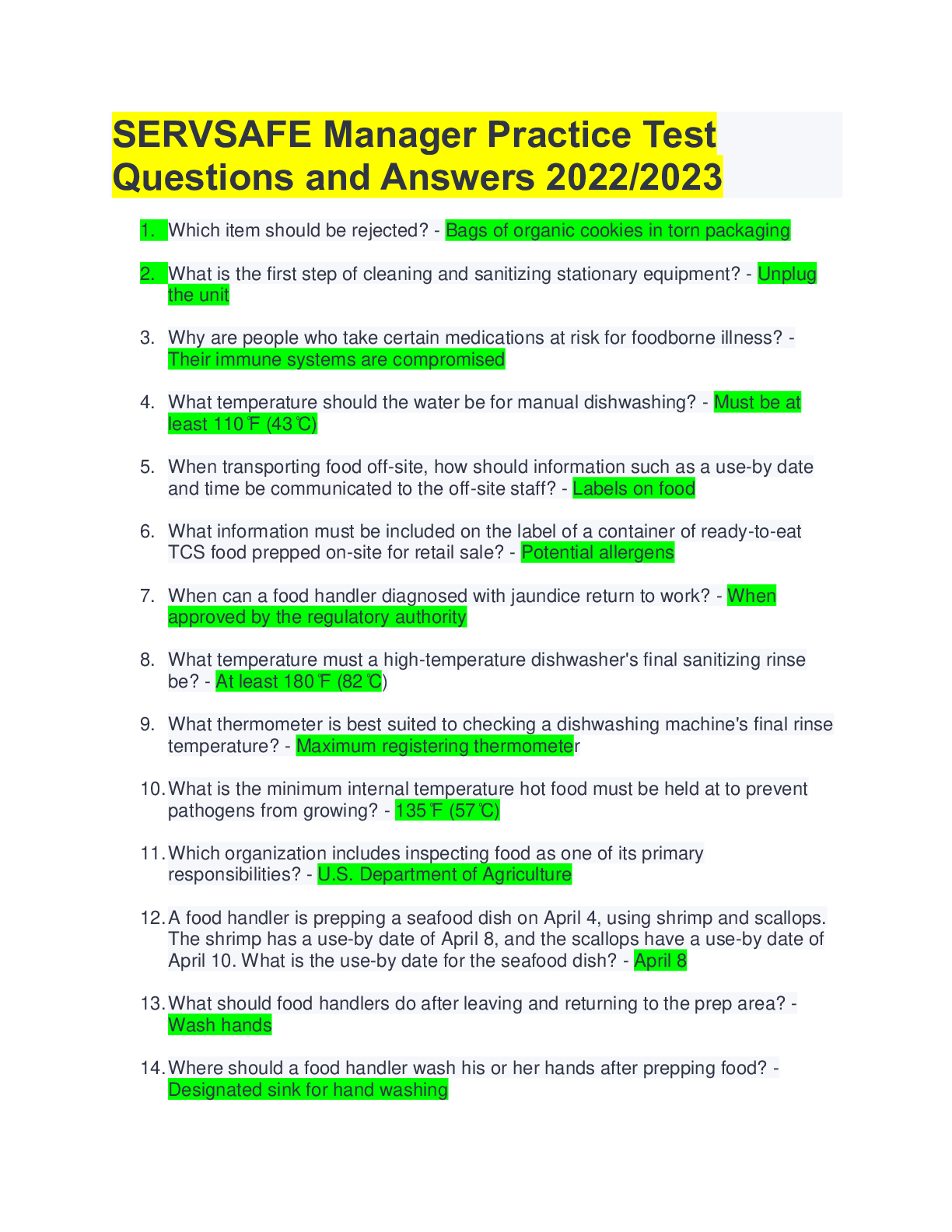

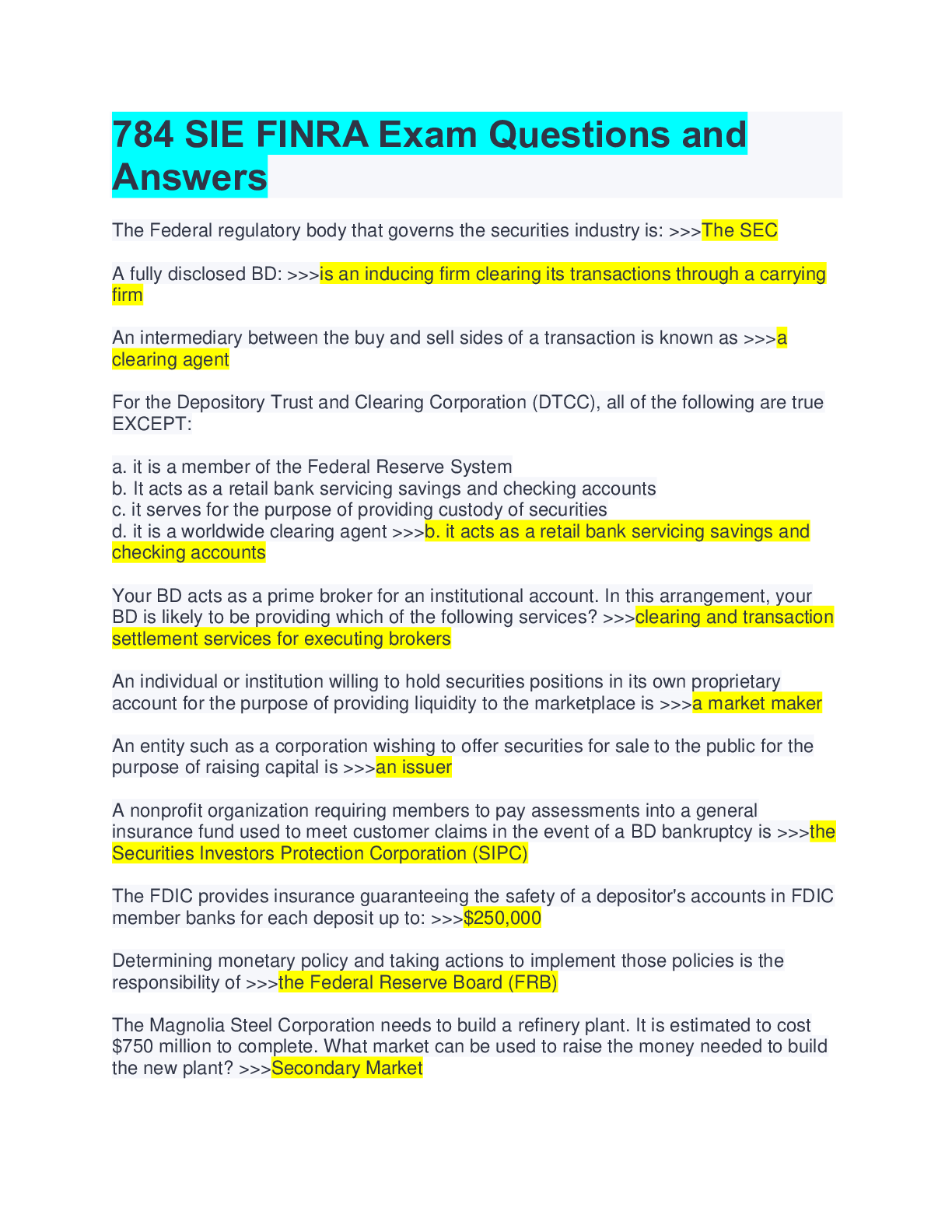
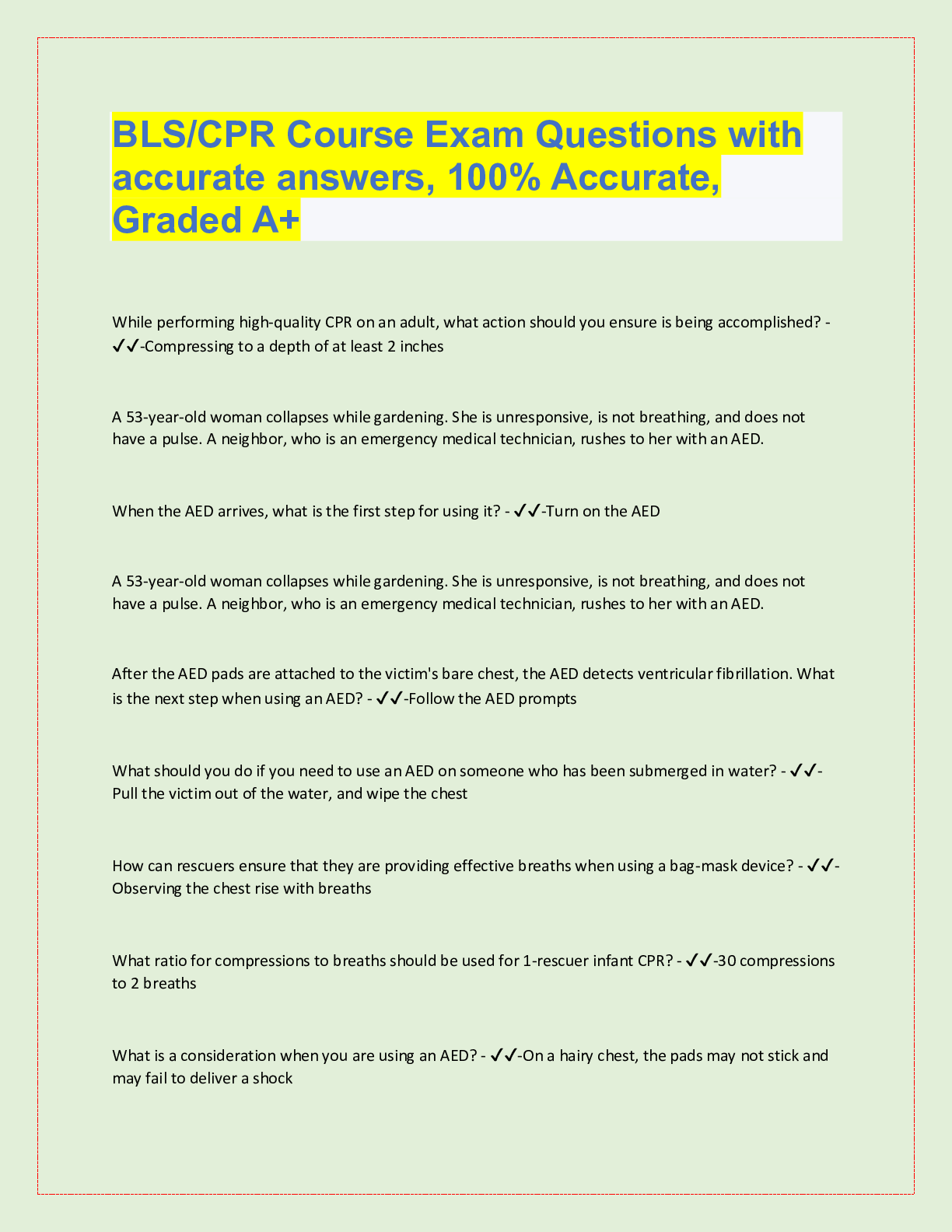
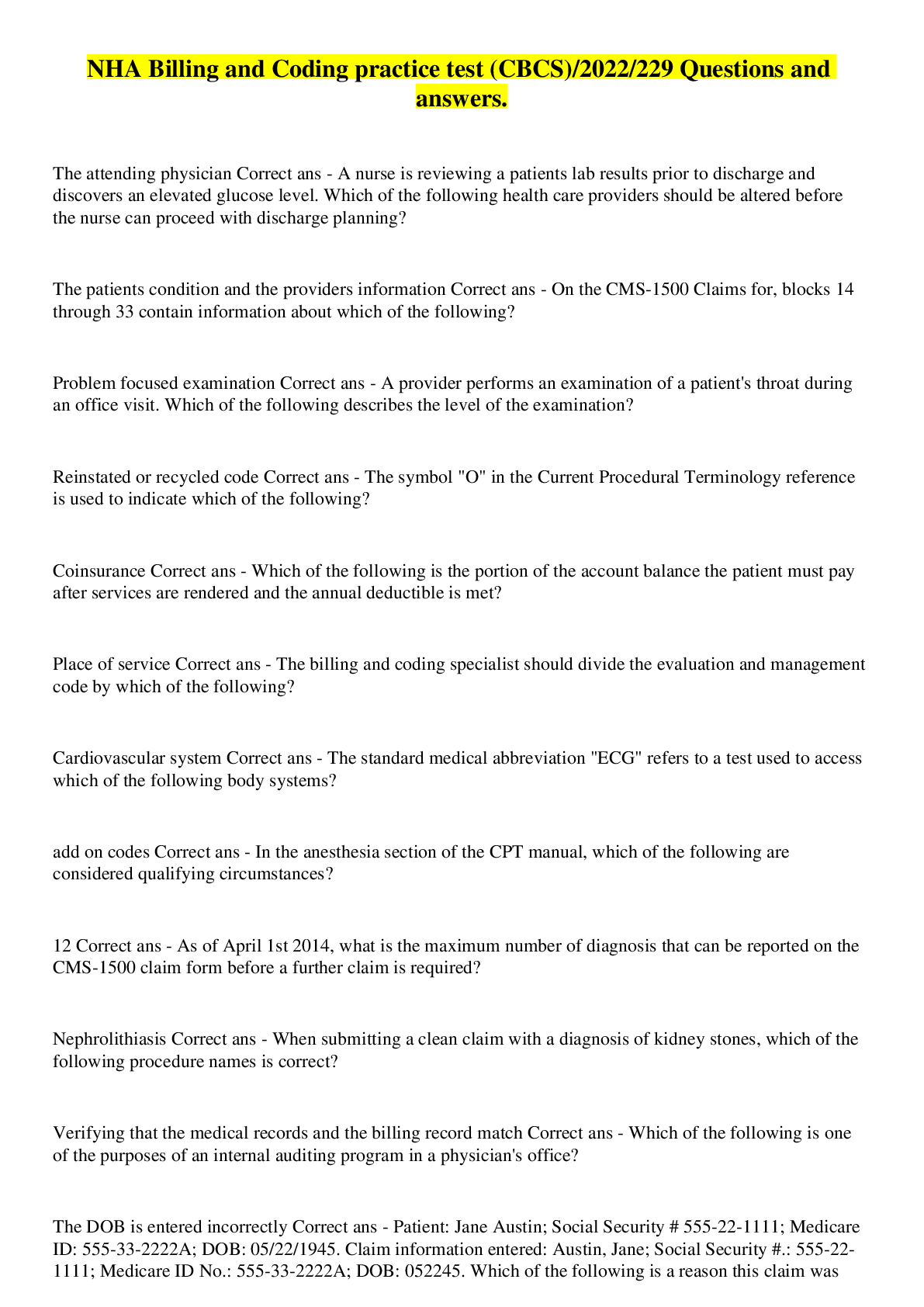
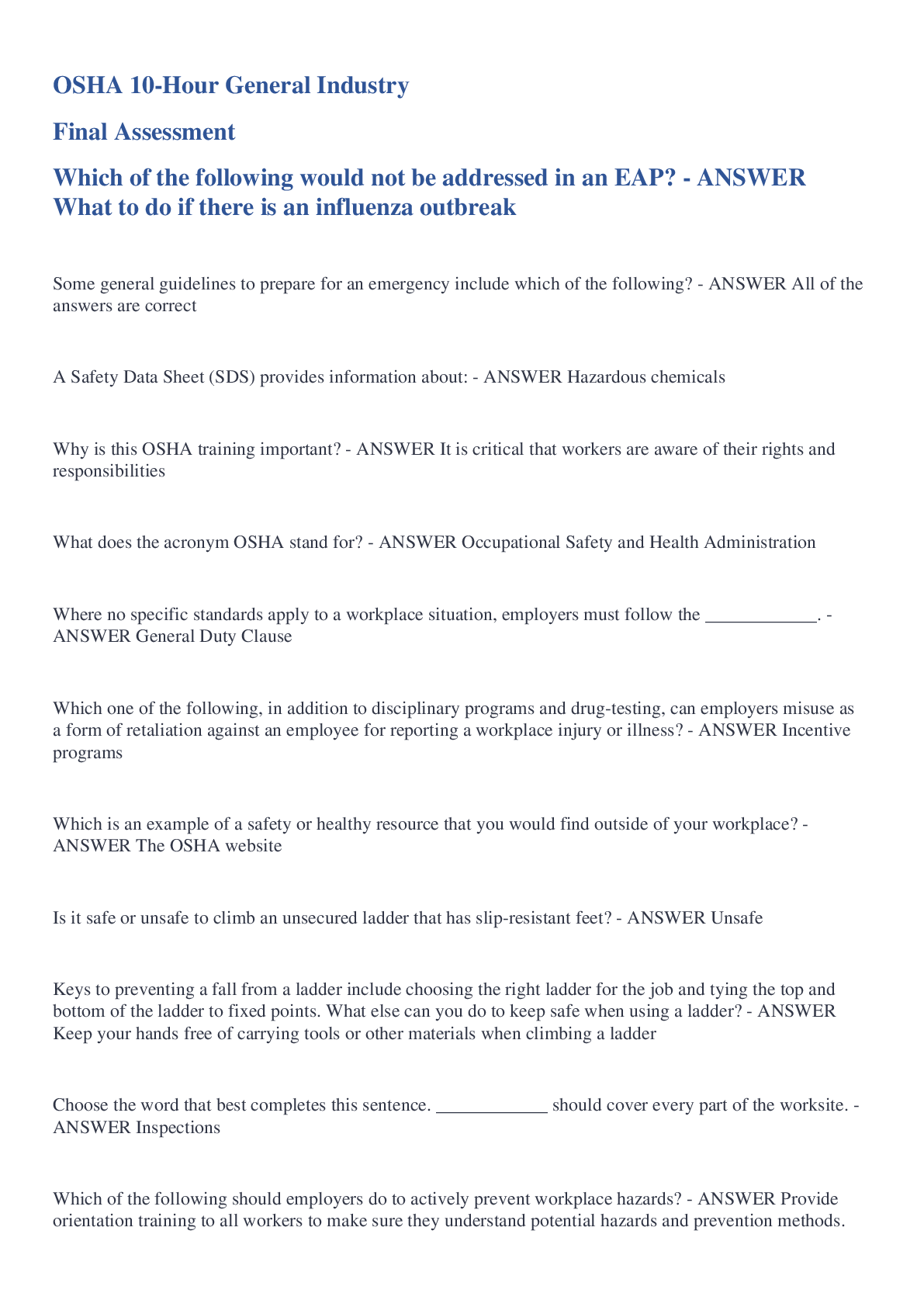

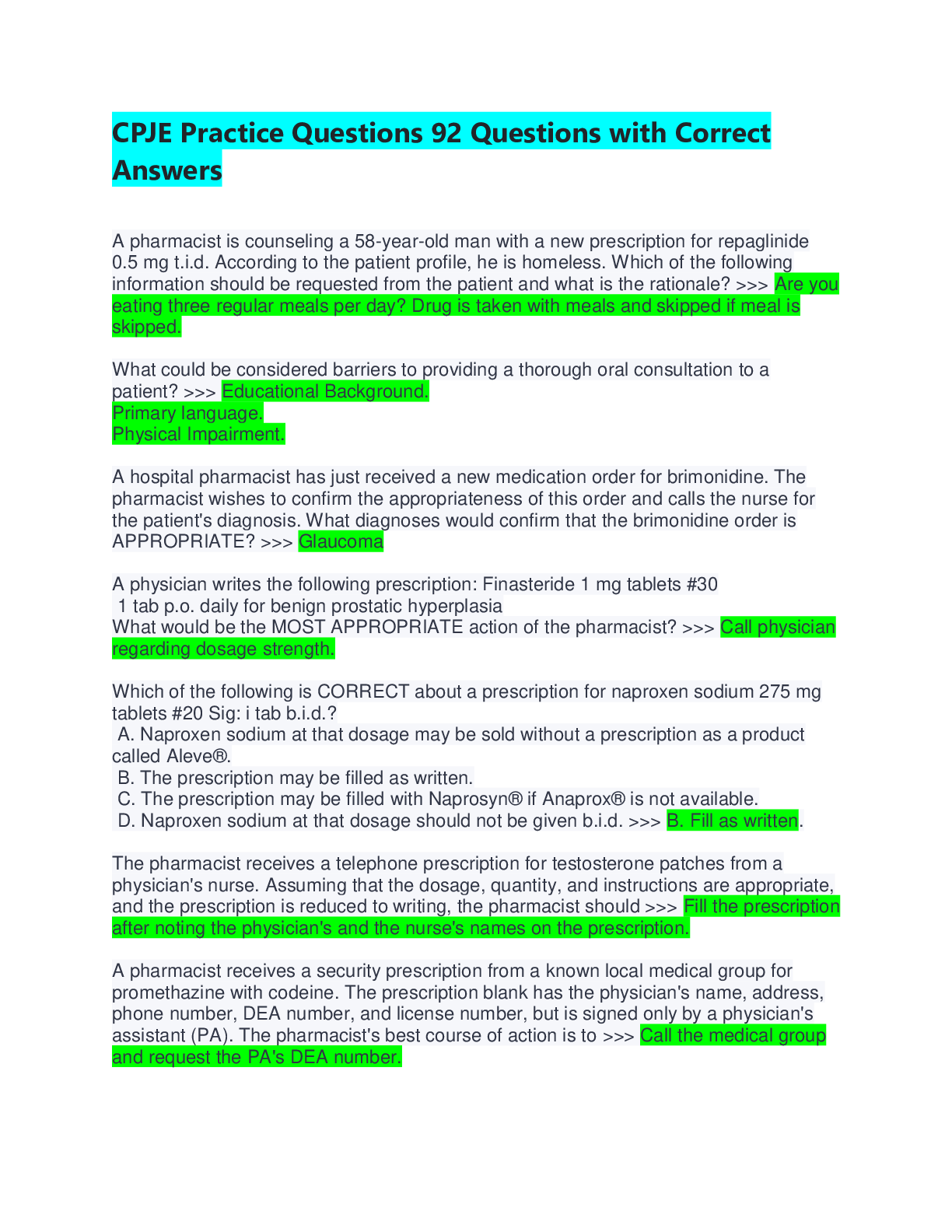

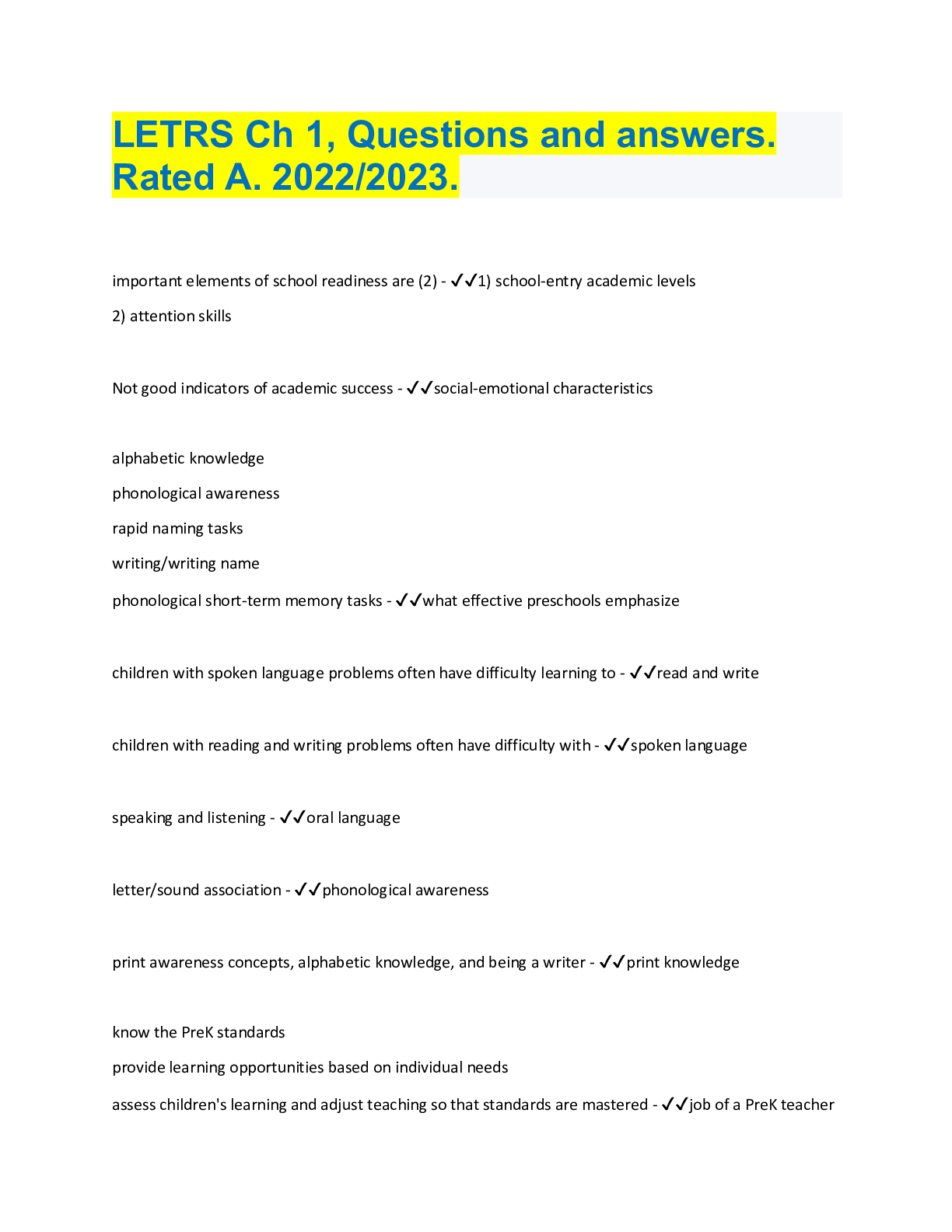
.png)

.png)


